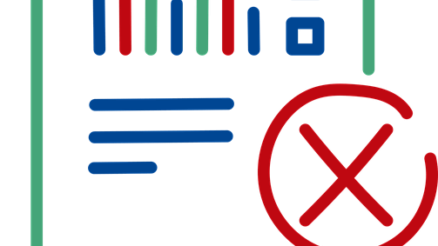Stepping into a new role can be like navigating uncharted waters, and having a clear, structured plan is akin to having a trusted compass.
A Business Development Manager (BDM) is crucial in an organization for identifying new business opportunities, building relationships with potential clients, and driving revenue growth.
For a new BDM, a structured plan is essential to navigate the competitive landscape effectively, establish clear goals, and make for an impactful business growth.
30 60 90 day plan for Business Development Manager is that structured plan that isn’t just checklist but a strategic guide to help a new BDM not only acclimate to the new position but also to thrive in it.
Whether you’re a seasoned professional BDM looking to refine your approach or a newcomer eager to make your mark, this plan is designed to set you on a path to success, making your first three months as impactful as possible.
So, let’s get started on this exciting journey.
What is 30 60 90 day plan approach?
The 30 60 90 day plan is a strategic framework used primarily by professionals starting in a new role or by those seeking to revitalize or refocus their work in an existing position.
First 30 Days – The Learning Phase:
This initial phase is primarily about orientation and absorption. It involves understanding the company’s culture, products, services, systems, and structures.
Newcomers familiarize themselves with the team, management, and their specific role. It’s about asking questions, observing workflows, and starting to identify areas of potential improvement or change.
The goal is to build a solid foundation of knowledge about the organization and its processes.
Next 30 Days (31-60) – The Integration Phase
This period is about starting to integrate more deeply into the organization by beginning to apply the knowledge gained in the first month.
In this period, professionals need to develop deeper relationships with colleagues, start to implement initial ideas and strategies, and take on more significant responsibilities. It’s a time to start setting short-term goals and demonstrating value.
Final 30 Days (61-90) – The Execution Phase:
This phase is centered on fully executing and optimizing the strategies and plans formulated in the first 60 days.
This is the time to establish oneself as a valuable and effective member of the organization who is capable of driving results and achieving set goals.
This phase is all about implementing key initiatives, refining strategies based on feedback, and starting to measure outcomes. It’s also a time to set longer-term goals and solidify one’s place in the team.
Benefits of 30 60 90 Day Plan Approach:
Here are some key benefits of 30 60 90 day plan:
- It offers a clear roadmap for the first three months, helping to manage time and priorities effectively.
- Helps in setting realistic, achievable goals for each phase, ensuring that one’s efforts are aligned with the company’s expectations and needs.
- By breaking down the first 90 days into phases, it becomes easier to track progress and make adjustments as necessary.
- This approach helps in managing the often overwhelming experience of starting a new role by providing a step-by-step plan.
- Successfully achieving the milestones set in the plan can build confidence and establish credibility with colleagues and management.
What is role of Business Development Manager?
The role of a Business Development Manager is multifaceted and pivotal to the growth and success of an organization.
They are strategists, relationship builders, researchers, and negotiators all rolled into one, and their work directly impacts the business’s bottom line and future prospects
Here are the key responsibilities and functions of this role:
Identifying New Opportunities: One of the primary roles is to identify new business opportunities. This could include finding new markets, new partnerships, new ways to reach existing markets, or new product or service offerings to better meet the needs of existing markets.
Building and Maintaining Relationships: They are responsible for building relationships with potential clients, partners, and sometimes even competitors. This involves networking, attending industry events, and setting up meetings to explore potential collaborations.
Market Research and Analysis: Conducting thorough market research and analysis to understand trends, identify opportunities and threats, and gain a competitive edge is a critical part of their job. This information helps in making informed decisions and developing strategic plans.
Developing and Implementing Growth Strategies: Based on their research, Business Development Managers devise growth strategies. This includes setting goals, defining target markets, and determining the best approach to reach these markets.
30 60 90 Day Plan for Business Development Manager
Embarking on a new role as a Business Development Manager can be both exhilarating and daunting, and this is where the 30 60 90 day plan comes into play and it acts as a crucial roadmap for success.
Let’s read in detail about 30 60 90 day plan for Business Development Manager:
The First 30 Days for Business Development Manager
The first 30 days are about acclimating to the new environment, understanding the foundational aspects of the company and the role, and preparing for active contribution in the subsequent months. It’s a period marked by observation, learning, and strategic planning.
Week 1-2: Orientation
Understanding Company Culture and Values
In the first week or two, a Business Development Manager (BDM) should prioritize understanding the company’s culture and values. Understanding the culture includes learning about the company’s mission, vision, and the values it espouses.
This knowledge is crucial because it shapes how the BDM will approach business development, ensuring their strategies and communication align with the company’s ethos. It also helps in understanding the behavioral expectations within the company, how decisions are made, and what drives success in this particular environment.
Familiarization with Company Products/Services
Alongside understanding the company’s culture, the BDM needs to familiarize themselves thoroughly with the products or services the company offers. This involves not only understanding the features and benefits of these products/services but also gaining insights into how they meet the needs of the current market.
The BDM should spend time learning about the unique selling propositions of the products/services, how they compare with competitors, and any existing customer feedback or case studies.
Introduction to Team Members and Key Departments
The initial weeks are also the time for the BDM to be introduced to team members and key departments within the organization. Building these relationships is vital, as business development often requires cross-departmental collaboration.
Understanding the roles and responsibilities of different teams and how they contribute to the organization’s overall goals aids in identifying potential internal resources and support systems. This step is about more than just putting names to faces; it’s about starting to build a network within the organization that the BDM can collaborate with and rely on for information, support, and to drive initiatives forward.
Week 3-4: Integration
Initial Meetings with Key Stakeholders
During weeks 3 and 4, a Business Development Manager (BDM) should start having initial meetings with key stakeholders. These stakeholders can include senior management, major clients, and important partners who have a significant impact on the business’s development and growth.
The purpose of these meetings is to build relationships, understand their expectations and perspectives, and gain insights into how the business development role can best support and align with their objectives.
These discussions provide valuable information about the company’s strategic direction, priorities, and challenges, which are crucial for the BDM in shaping their strategies and initiatives.
Begin to Understand the Sales Process and Client Management Systems
At this stage, the BDM should also begin to get a grasp of the company’s sales processes and client management systems. This involves understanding how the sales team operates, the stages of the sales cycle, and how clients are acquired and retained.
Familiarity with the client management system is important, as it is often the repository of crucial client information and history. Understanding these processes and systems is essential for the BDM to identify areas where business development efforts can align with and support sales activities, and to spot opportunities for improving client engagement and acquisition strategies.
Initial Analysis of Current Business Development Strategies
The BDM should now start conducting an initial analysis of the company’s existing business development strategies. This involves reviewing current strategies, assessing their effectiveness, and identifying areas for improvement. It’s important to understand what has been working well and what hasn’t, and why.
This analysis will help in formulating new strategies or refining existing ones to better meet the company’s goals.
Setting Personal Performance Benchmarks
By the end of the fourth week, it’s time for the BDM to set personal performance benchmarks. These benchmarks should be specific, measurable, achievable, relevant, and time-bound (SMART).
They will serve as a personal gauge for measuring the effectiveness and impact of their work in the role. This could include targets related to the number of new client relationships established, improvement in sales metrics, successful launch of new business initiatives, or enhancement of client satisfaction levels.
Setting these benchmarks early helps in maintaining focus and drive, and provides clear goals to strive towards in the coming months.
Learn more about: Key Performance Indicators for Business Development Manager
The Next 30 Days (31-60) for Business Development Manager
For a Business Development Manager, the key objective for days 31-60 is to focus on developing a strategy and make a plan for initial implementation of that strategy.
Week 5-6: Strategy Development
Deep Dive into Market Research and Competitive Analysis
During weeks 5 and 6, the Business Development Manager (BDM) should focus on conducting an in-depth market research and competitive analysis. This involves gathering and analyzing data about current market trends, customer needs and preferences, and identifying key competitors and their strategies.
Understanding the market landscape is crucial for recognizing opportunities and threats. The BDM should look for gaps in the market that the company can exploit, trends that can be capitalized on, and competitive weaknesses that can be turned into advantages.
Identifying Potential Clients and Partners
Another critical task for the BDM in these weeks is to identify potential clients and partners. This process should be guided by the insights gained from the market research. The BDM should focus on prospects that align with the company’s strategic objectives and where the company’s offerings can provide significant value.
This involves segmenting the market, identifying key decision-makers, and understanding their needs and challenges. Additionally, exploring partnership opportunities can open new avenues for business growth. This could include alliances with complementary businesses, channel partners, or industry influencers.
Developing a Tailored Business Development Strategy
Armed with comprehensive market insights and potential client and partner information, the BDM should now focus on developing a tailored business development strategy. This strategy should outline clear objectives, target markets, value propositions, and the tactics to reach and engage potential clients and partners.
It should also include plans for leveraging existing relationships and networks. The strategy should be aligned with the overall business goals and should detail the resources required, timelines, and key performance indicators (KPIs) for measuring success.
Week 7-8: Initial Implementation
Begin Outreach to Potential Clients and Partners
In weeks 7 and 8, the Business Development Manager (BDM) should start active outreach to the potential clients and partners identified earlier. This involves initiating contact through various channels such as emails, phone calls, networking events, or direct meetings.
The purpose of this outreach is to establish communication, introduce the company and its offerings, and explore opportunities for collaboration or sales. This step is crucial in expanding the business’s client base and forging strategic partnerships.
The BDM should use personalized approaches tailored to each potential client or partner, emphasizing how their needs can be met through the company’s services or products.
Start Implementing Developed Strategies
With the groundwork laid in the previous weeks, the BDM should now begin implementing the developed business development strategies. This includes putting into action the plans and initiatives designed to reach new clients, enter new markets, or launch new products or services.
Implementation might involve overseeing campaigns, managing new initiatives, or directly engaging in business development activities. It is important to ensure that the execution of these strategies is in line with the set objectives and is carried out efficiently.
Initial Review of Strategies’ Effectiveness
Towards the end of this phase, it’s crucial for the BDM to conduct an initial review of the strategies’ effectiveness. This involves assessing the outcomes of the implemented strategies against the set KPIs and objectives.
The BDM should look for indicators such as an increase in leads, engagement levels with potential clients, feedback received, and any initial deals or partnerships formed. This review helps in understanding what is working and what isn’t, providing an opportunity for early adjustments and refinements.
The Final 30 Days (61-90) for Business Development Manager
The next days 61-90 are crucial for solidifying the gains made in the initial phases and setting a trajectory for ongoing growth and success in the role of a Business Development Manager. They combine strategic expansion with a focus on sustainability and long-term planning.
Week 9-10: Strategy Optimization
Analyzing Outcomes and Feedback from Initial Strategy Implementation
In weeks 9 and 10, the focus for a Business Development Manager (BDM) shifts to analyzing the outcomes and feedback from the initial strategy implementation. This is a critical assessment phase where the BDM evaluates the effectiveness of the strategies that were put into action during the previous 30 days.
The BDM needs to review key performance indicators (KPIs), sales data, client feedback, and any other relevant metrics. This analysis helps in understanding which aspects of the strategy are working well and which ones are not delivering the desired results. It’s also an opportunity to gather insights on market response, client satisfaction, and overall impact of the business development efforts.
Refining Strategies Based on Data and Feedback
Based on the analysis conducted, the next step is to refine and adjust the business development strategies. This refinement process should be data-driven, taking into account the insights gained from the analysis.
The BDM should identify areas that require changes or improvements – this could include tweaking the approach to client engagement, modifying outreach methods, or adjusting the value proposition to better meet market needs.
Further Integration with Sales and Marketing Teams
Further integration with sales and marketing teams is essential during this phase. The BDM should continue to work closely with these teams to ensure that the refined strategies are well-supported and effectively executed.
This collaboration might involve coordinating joint efforts, sharing market insights, aligning on messaging and campaigns, and working together on client acquisition and retention strategies. The BDM’s role in bridging the gap between business development, sales, and marketing is crucial for creating a cohesive approach to achieving the company’s growth objectives.
Week 11-12: Expansion
Scaling Successful Strategies
During weeks 11 and 12, the Business Development Manager (BDM) should focus on scaling up strategies that have proven successful in the initial implementation phase. This involves expanding these strategies to reach a broader audience or to deepen market penetration.
For instance, if certain approaches in client acquisition or partnership development have yielded positive results, the BDM should look at ways to amplify these efforts. This could mean increasing the resources allocated to these strategies, extending them to new geographical regions, or applying them to different market segments.
Exploring New Market Opportunities
Another critical objective for the BDM at this stage is to explore new market opportunities. Based on the insights gained from the earlier market research and the success of initial strategies, the BDM should identify and assess potential new markets for expansion.
This could involve diversifying into different industries, targeting new demographic segments, or offering new products or services. Exploring these opportunities requires careful analysis to understand the market dynamics, competition, customer needs, and potential barriers to entry.
Setting the Stage for Long-term Growth and Partnerships
In the final weeks of the 90-day plan, the BDM should focus on laying the groundwork for long-term growth and sustainable partnerships. This means not just looking at immediate gains but also planning for future development.
It involves establishing relationships that can evolve into long-term partnerships, creating strategies that are scalable and adaptable over time, and building a robust pipeline for continuous business opportunities. Additionally, the BDM should also consider how to maintain and nurture existing client relationships and partnerships, as these are crucial for long-term success.
Final words
30 60 90 day plan for Business Development Manager is one of the most effective planning framework and tool for any new professional in this challenging role. Remember, the key to truly excelling in this role lies in your ability to adapt, learn continuously, and stay agile in the ever-evolving business landscape. Keep revisiting and refining your strategies, nurturing those valuable relationships, and always keep an eye on new opportunities. Most importantly, don’t forget to take a moment to appreciate your progress and the milestones you’ve achieved. Your first 90 days are a blueprint for your career path ahead, and from here, the possibilities are limitless. So, go ahead, make your mark, and keep soaring to new heights in the world of business development!



